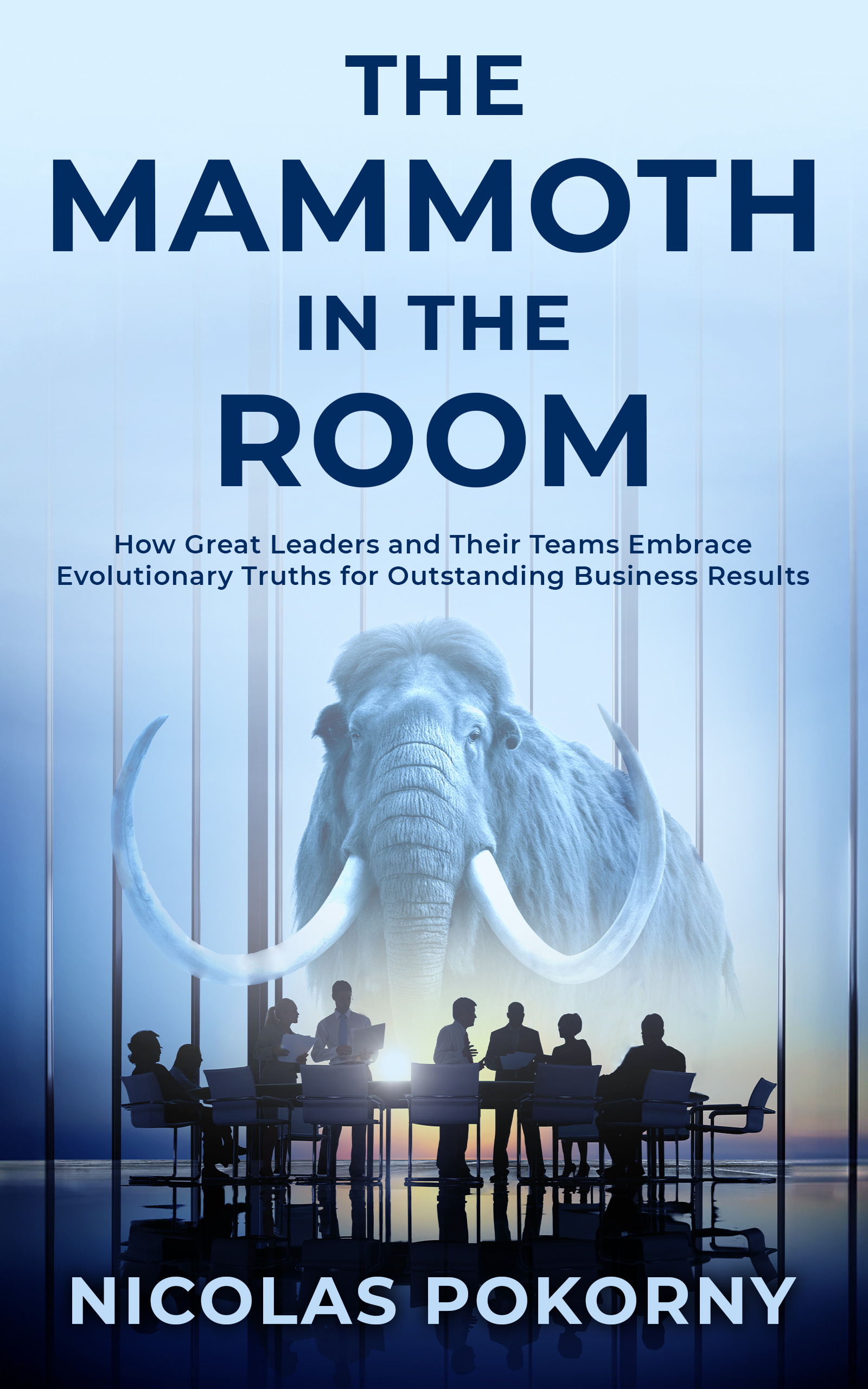Offering an innovative theory of business loosely based on Darwin’s theory of evolution, Nicolas Pokorny’s The Mammoth in the Room explores the relation between corporate culture and business success in an accessible and practical manner. Through theoretical discussions, case studies, and real-world exercises, Pokorny guides readers toward mastering versatile means of bringing down a woolly mammoth—that is, overcoming obstacles and achieving goals—via the kind of efficient and cooperative culture that ancient humans relied on.
The first part of the book, “On People,” considers how workers form the foundation for completing work, which means that a business leader must take pains to hire, train, motivate, and retain the right kind of people. Through the example of a strategy change within Indemnify, a large insurance company, Pokorny demonstrates how the success of a change can be viewed differently by different people and, ultimately, prove difficult to assess. But why this difference in perception? Simply put, “Because culture eats strategy for breakfast—every time.”
This vital insight is built on to illustrate how true success can only come about when employees implement change because they want to and they believe in its benefits. In other words, a successful leader must foster a culture that embraces change, innovation, and inclusion to ensure that employees do the same. The other crucial insight here is that how something can be accomplished is just as important as why it should be accomplished. Again, culture is key. Thus, drawing on statistics, examples, game theory, and concepts from evolutionary biology, Pokorny reveals how leaders can make the most of human behavior.
Pokorny then moves on to “On Strategy” and introduces the Dynamic Stability Business Framework, which helps leaders to foster an adaptable corporate culture that is able to continuously evolve to meet business needs and address challenges. As evolution makes it difficult for people to accept change, it is important for a leader to exhibit attributes that inspire confidence, belief, and risk-taking behavior, which helps to ensure that strategy is successfully implemented. Here, Pokorny’s five-level Framework distills how leaders can leverage evolving human systems.
Finally, Pokorny turns his attention to the subject of “On Implementation,” which entails putting the lessons learned earlier in the book into practice. Using examples of some of the biggest names in business—Edison, Ford, Bezos, Gates, Jobs, etc.—he stresses that people succeed when they actually get things done. Having good ideas is only the starting point, so a great leader must be an implementation champion and drive the execution of strategy. Pokorny again highlights the importance of corporate culture in this regard, highlighting the characteristics and skills that influence implementation excellence.
The Mammoth in the Room offers a host of inspiring examples and practical tips for business leaders seeking to enhance their company culture and drive change that will lead to both resilience and success. Pokorny has decades of experience in business, which he leverages to provide actionable insights that are applicable to companies of all sizes. His writing style is clear, conversational, and approachable, and the book as a whole is sure to assist leaders in strengthening and augmenting their leadership style and motivational skills.


